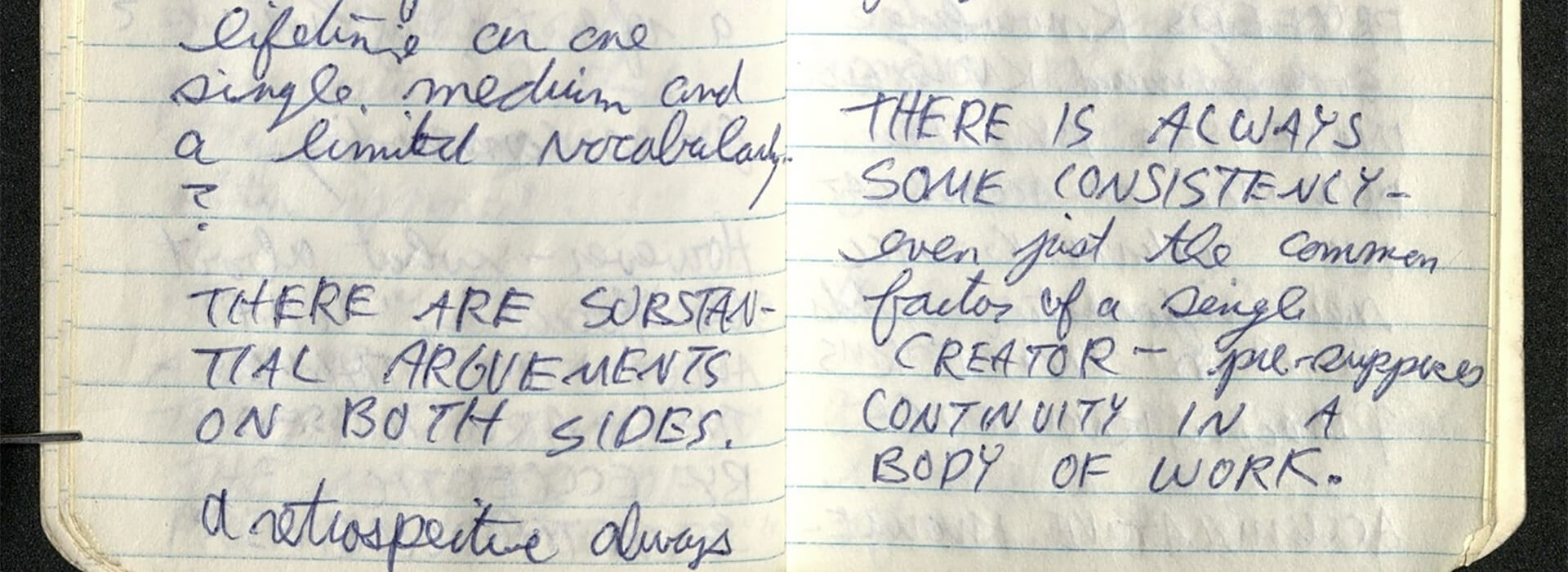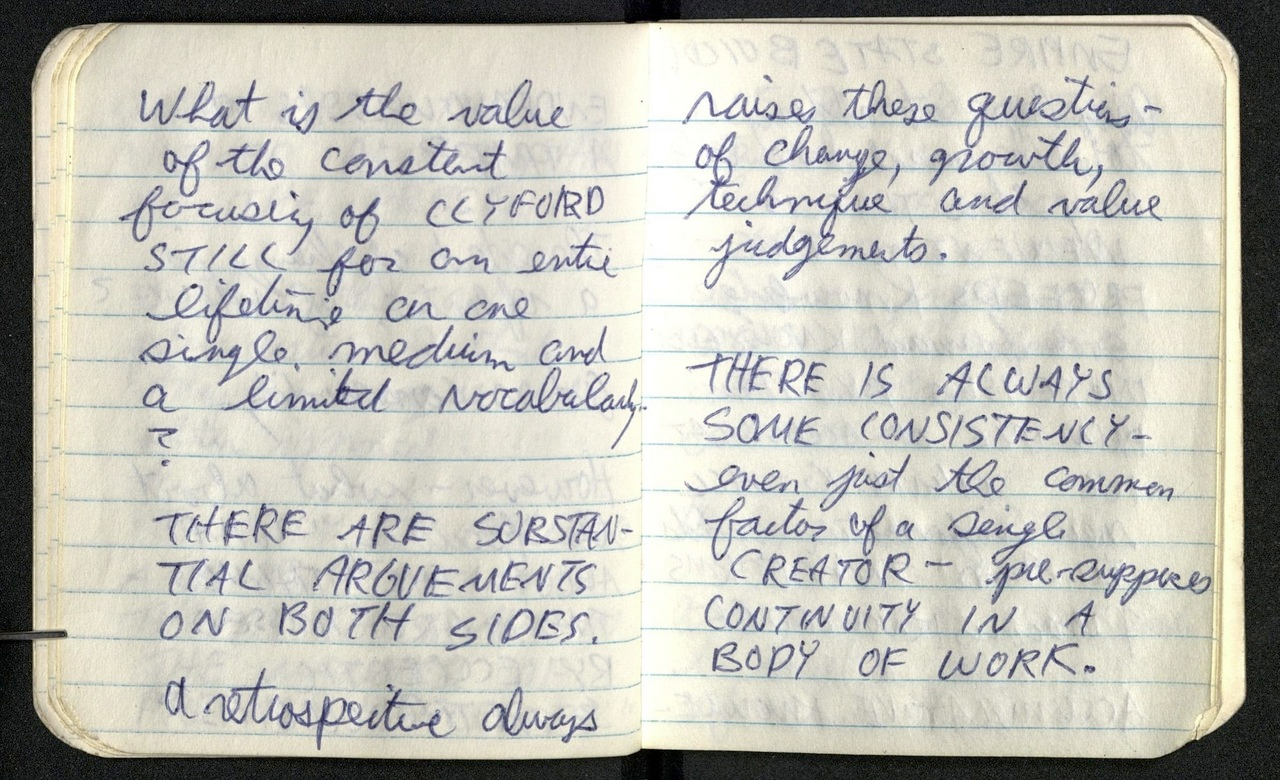by Isaac Linder, Visitor Services Representative
“CLYFORD STILL KNEW ABOUT PAINTING.”[sic] A note on youth and influence.” (Keith Haring)

One of the enduring gifts that an institution like the Clyfford Still Museum provides involves the ongoing research that takes place within its archives. Today, with more and more Museums and arts-related archives making their holdings available digitally, the possibility of discovering connections between disparate artists and insights into their relationships also increases exponentially. I had the pleasure of stumbling into one such moment recently, when I found myself perusing the journals of the pop artist Keith Haring. In conjunction with a recent exhibition at the Brooklyn Museum, The Keith Haring Foundation began the laudable project of digitizing a page-a-day from the artist’s journals to the social media platform, Tumblr (the uploading continues to this day, with new entries uploaded here every 24 hours). Born in 1958 Keith Haring would have been a tender 21 years old in the winter of 1979 when, as I was delighted to discover, he paid a visit to Clyfford Still’s solo exhibition at the Metropolitan Museum of Art in New York City. What remains of Haring’s visit is documented in a meager eight-page spread, but from what we find written there one gets the sense that the reflection Haring was prompted to may have been considerably more profound.
Specifically, I was struck by one small passage where we find Haring youthfully mulling over the following question:
“What is the value of the constant focusing of CLYFORD STILL for an entire lifetime on one single medium and a limited vocabulary?”
For those who are familiar with Keith Haring’s legacy, the question opens onto a small revelation. We imagine the budding painter, struggling with an important question that every artist will at one point or another have to face, and know that this was a question Haring would be quick to resolve for himself. Having been in New York City barely a year at this time, Haring stood on the precipice into his own lifelong career, which he would spend cultivating one of the most limited, iconic vocabularies in the history of art. While the style that Haring went on to develop will strike many as the farthest thing possible from Still’s own singular vision, the insight that Haring’s influence would have been motivated, at least in part, by an encounter with the elderly master is one of the reasons I’m continually drawn back into the archives. As we ready our new exhibition here at the Clyfford Still Museum I can’t help but wonder – who, in forty or fifty years time, will we discover had written about a pilgrimage to Denver and what kind of questions will they ask?
The artist and activist Keith Haring alongside his singular, graffiti-inspired style. (Source: Brooklyn Museum)


